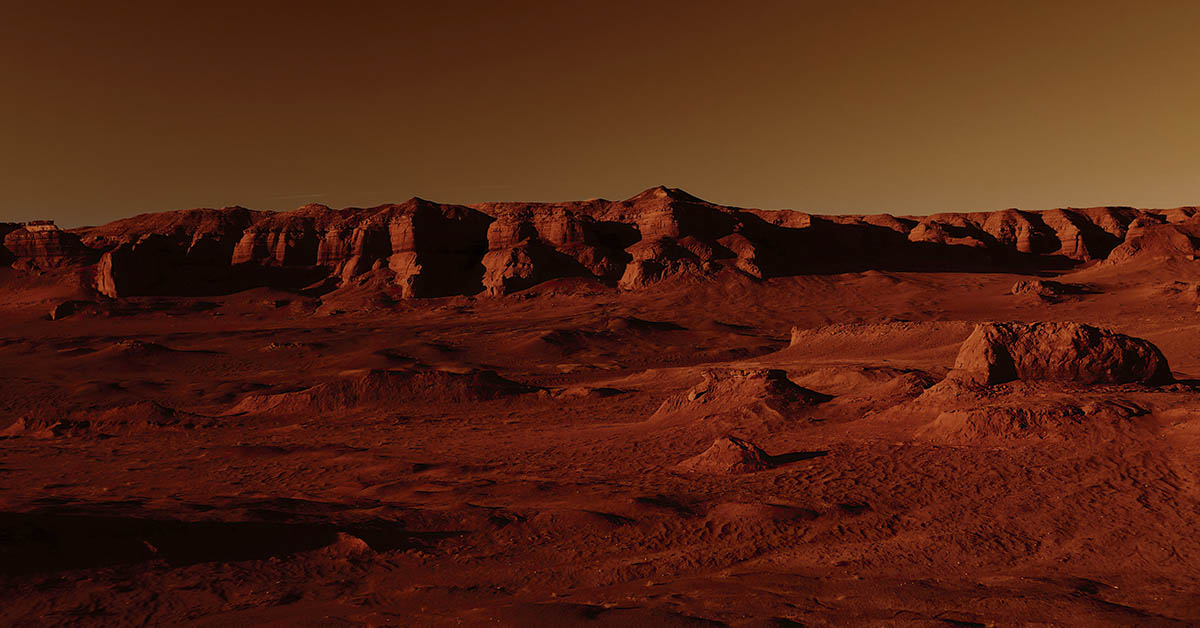In our tireless quest to comprehend the cosmos, Mars, our neighboring planet, stands as a formidable mystery and opportunity.1 Yet, intriguingly, some parts of its alien landscape remain untouched, cordoned off from human exploration due to an intricate tapestry of scientific, ethical, and legal considerations.2
Central to our exploration is the principle of planetary protection, a cornerstone of space exploration ethics. Rooted in the Outer Space Treaty of 1967, this principle aims to avert the biological contamination of celestial bodies and mitigate risks to Earth’s biosphere due to potential extraterrestrial introductions. It provides a framework that allows us to extend our reach into the cosmos while at the same time ensuring we uphold our responsibilities to both our home planet and the celestial entities we explore.
Missions such as those embarked upon by the Mars Exploration Rovers and Science Laboratory’s Curiosity rover have significantly expanded our knowledge of Mars’ terrain, climate, and possible life-sustaining potential. Each spacecraft deployed to the Red Planet undergoes rigorous sterilization processes to minimize the risk of Earth-originating lifeforms hitching a ride. However, even with these meticulous precautions, we cannot completely eliminate the risk of contamination. The heart of the issue lies in the fact that from leaving Earth, there are a few (225 million to be exact) kilometers before getting to Mars. The only way to ensure any dirt or debris would be cleaned off our rovers would be to bathe them in heat or radiation too powerful for the electronics inside to handle. This unavoidable uncertainty shows why specific regions, designated as Special Regions, are currently off-limits for exploration.
Special Regions
Special Regions refers to areas identified by the Committee on Space Research (COSPAR) as potentially hospitable to terrestrial life or where Martian life may exist. In particular, regions where liquid water may be present, are of paramount concern. The reasoning behind the strict regulations surrounding these Special Regions are:
- To prevent the inadvertent extermination of any extant Martian lifeforms
- To preserve the scientific integrity of Mars-based studies by avoiding false positives in the quest for life beyond Earth.3
In 2015, the discovery of recurring slope lineae (RSL), or seasonal flows of salty liquid water on the Martian surface, presented an environment where Earth-borne microbes could conceivably survive and reproduce. These areas, therefore, fell under the classification of Special Regions and were swiftly rendered inaccessible to our exploratory rovers.
Read: 50 Years Ago NASA Sent a Map Into Space to Help Aliens Find Earth—Now They’ve Got An Awesome Update
Hope For The Future
Yet, these restrictions are by no means set in stone. As our technological prowess expands, our sterilization processes become more effective, and our rover technology continues to advance, we may well unlock the potential to explore these currently forbidden areas. The hurdle we must overcome is striking a balance between strict adherence to planetary protection principles and the ambitious pursuit of our scientific objectives.
Our technological advancements have enabled us to reach new frontiers and answer compelling scientific questions about Mars, but they also urge us to contemplate the ethical implications of space exploration. Therefore, the notion of planetary protection is not only a practical necessity for preserving scientific integrity but also an ethical mandate that reflects our responsibility as explorers.
What’s intriguing is that the discovery of Special Regions has unexpectedly enriched our understanding of the Martian landscape. Each identified Special Region represents a distinct environment where life as we know it could potentially exist. This has offered a novel perspective on how life might adapt to conditions on the Martian surface and has prompted intriguing new questions about the potential forms that Martian life could take.
At the same time, we must consider the potential consequences of future human missions to Mars. Human explorers could inadvertently introduce microorganisms from Earth, jeopardizing the Martian ecosystem and complicating the search for indigenous life. As such, the Special Regions take on even greater importance in the context of human exploration. Guidelines and procedures will need to evolve to address the specific challenges posed by human missions, requiring careful consideration and international cooperation.
What Comes Next
Looking toward the future, it is clear that our exploration of the Red Planet must be guided by a commitment to preserving the integrity of its environment and our pursuit of knowledge. The lessons we learn from navigating the challenges of Mars exploration will inform future missions to other planets and moons and deepen our understanding of how to live sustainably and responsibly in our own world.
In essence, the exploration of Mars and its Special Regions symbolizes a universal journey that transcends geographical boundaries. It speaks to our shared curiosity and ambition as a species, to our quest for knowledge, and our collective will to push the literal boundaries of what is known while respecting the universe’s inherent integrity.
While the Red Planet’s forbidden regions may stand as testimonies to our limitations, they epitomize our boundless spirit of exploration and our potential to grow technologically and ethically. In our quest to uncover Mars’s secrets, we are not only reaching for new scientific discoveries but also stretching the capacities of human responsibility and foresight.
Keep Reading: China Is Digging A 10,000-Meter Hole Into The Earth To Reach The Cretaceous System
Sources
- “There Are Regions On Mars That It’s Forbidden To Explore.” IFL Science. JONATHAN O’CALLAGHAN.
August 15, 2017. - “Here’s Why NASA’s Mars Rovers Are Banned From Investigating That Liquid Water.” Science Alert. Bec Crew. September 2015.
- “Planetary Protection.” SMA

